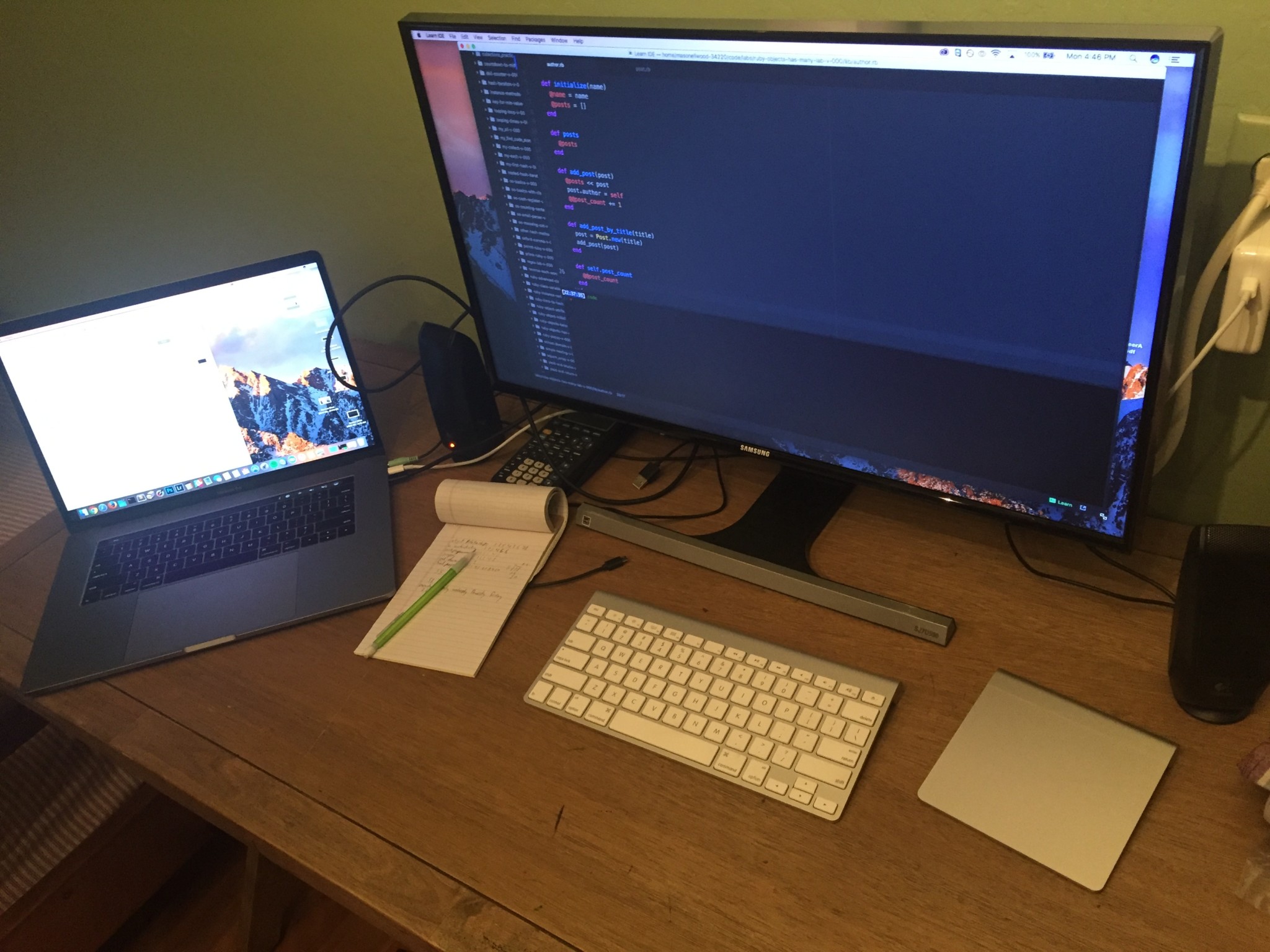My name is Mason Ellwood, and I’m currently working on Flatiron School’s Online Full Stack Web Development Program. Each week, I’ll be writing about my experience, what I’m learning, and tips on learning to code.
One of the keys to education, is learning how to learn. This was instilled in me at a very young age and was a battle for me to figure out how to do. How do I teach myself how to teach myself. Everyone has their own fool proof plan and take on this, but it never came natural to me.
In high school, I was like everyone else in regards to my education. Which entailed not understanding an array of material, then cramming right before the test, which, taught me a valuable lesson. It works!
What a simple concept! And with this revelation, I carried my head high while never actually completely understanding everything, but with the pride of knowing if given a day, I could pass a test on the finely defined material. This learning method did not hold true with programming….
Every instance of a problem is different, code is implemented in ways I have not used, and I am the sole resolver of the issue. And it was hard for me to adapt to this role. So I had to take a step back and reteach myself how to approach problems and how to resolve them. I had to think of things not in a linear fashion, but understand the full scope of problems that I was about to face and make a conscious decision on how to fix that problem while wasting the smallest amount of time.
What has worked for me was repetition. I always struggled with retention of information. Learning to spend my time, methodically working through issues, and defining solutions in my head prior to jumping right in. Understand the scope of the problem prior to defining a implementable solution. This was hard for me to get used to.
Once I understood my limitations, I could then understand the scope of my problem and build a learning structure for myself to see success. I placed these self defined limitations into different categories of understanding. Vernacular, contextual, applied, and fine arts. Once these pillars of personal development where set, I structured my day to allow time to proactively practice each.
Vernacular Understanding and Learning
I wake of at 5 A.M. everyday, walk upstairs and read for a minimum of a hour and a half to two hours. I am slow to wake up so, giving myself time to settle and enjoy my morning without any thought intensive activity has been key for me. I read two books a month, or at least push to meet this goal switching between fiction and nonfiction. Switching between the two primarily because of informational retention. Learning to enjoy literature to enjoy literature, and enjoying literature as a means to better understand the world.

(A few of the books I have recently read)
Contextual Career Betterment
Contextual being education, is The Flatiron School. I begin working on school work at 8 o’clock and push to complete and retain as much as I can within a 5-hour window that I have set for myself. 5 hours is a personal choice because I tend to get sidetracked and lose my focus around this time.

(Work station)
Applied and Fine Arts
This is something I have a passion for, and is a great way to break the monotony of my average day. The last book I read was from Thomas Korn one of foundational leaders in woodcraft.
“None of us enter our studios because the world desperately requires another painting or symphony or chair. But none of us take the work lightly, either, because it requires too much commitment, discipline, and risk of failure. Those who choose to do it professionally, except for the very few who reach the top, could find more effective ways to earn a decent living. The simple truth is that people who engage in creative practice go into the studio first and foremost because they expect to emerge from the other end of the creative gauntlet as different people…. But whatever our motivation may be, the bottom line is always the same: we engage in the creative process to become more of whom we’d like to be and, just as important, to discover more of whom we might become. We may make things because we enjoy the process, but our underlying intent, inevitably, is self-transformation.”
Understanding this, to become who you want to be, not pushing to correct the flaws you see in your own personal life is detrimental to personal growth. Ideas without application stagnate the potential of creating something greater than yourself. The arts are not just limited to craft skill, but the thought process and learning to think outside the constraints of the box you have build for yourself around “what you do” will allow you to see the other areas of learning you practice in a different light.

(Table I built out of an old 1964 fire hydrant)
Practicing these four pillars of understanding, have bettered myself in ways I can not image. I am not saying that this path is right for everyone. Choosing even one area that you find a weakness in and actively seeking to better yourself in that; you will be amazed at what you may find out about yourself.
Building this structure for myself to practice and follow has helped me immensely in school. I am able to retain and understand more information, and feel like I am not just learning code, but learning to create structure, discipline to see the bigger picture, and the ability to look at problems and resolutions in a proactive manner.






Leave a Reply